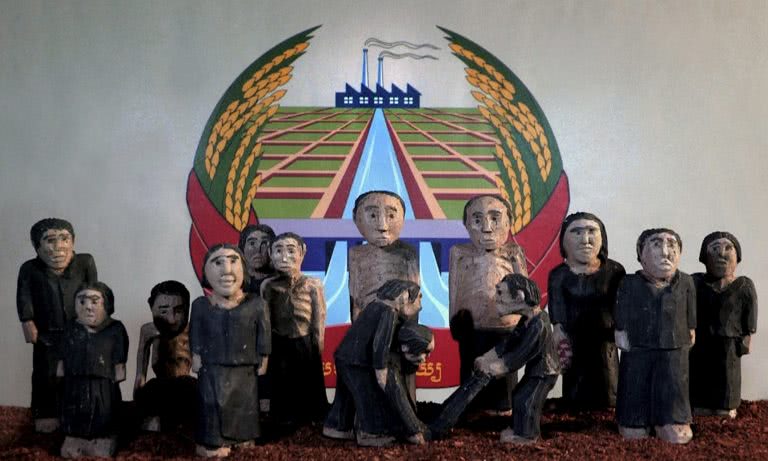Director Rithy Panh’s (S21: The Khmer Rouge Killing Machine) Academy Award nominated documentary, The Missing Picture, shows the violence and terror of Cambodia’s Khmer Rouge regime through scenes of clay figurines intermingled with archived propaganda footage. It is a film that works multitudinously: as a survivor’s testament, a work of art, and a creation of images of human resilience absent from official documentation.
Panh was eleven years old when the Khmer Rouge took power in 1975. He and his family were forced out of Phnom Penh and into labour camps, rife with hunger, sickness, torture and executions.
The Missing Picture is an adaptation of the autobiographical sections of Panh’s book The Elimination (2013). This continues Panh’s career-long examination of the Khmer Rouge in his films, tracing untold stories and unforgettable terrors. The Missing Picture takes a bold imaginative leap, depicting scenes featuring unanimated clay figurines (created by Sarith Mang) interspersed with official Khmer Rouge propaganda footage.
The clay figurines are simple and childlike amid overwhelming darkness and brutality. Their highly stylised and static nature contrasts with the flurry of activity in the labour camps displayed in official footage. Each figure is handcrafted and painted slowly and laboriously, the value placed on the figurines conflicting sharply with the cheapness of life under Pol Pot’s rule.
The film is narrated by Randal Douc in Panh’s native French, which ties the different formats together and maintains an engaging pace throughout. However, at times there is a lot of reading if you are watching with subtitles.
In The Missing Picture Panh creates an alternative to history; the depth of sadness and beauty fills in the humanity missing from the Khmer Rouge’s records.
4/5 stars
See The Missing Picture from March 20 in Dendy Cinemas Newtown.


































